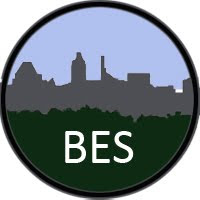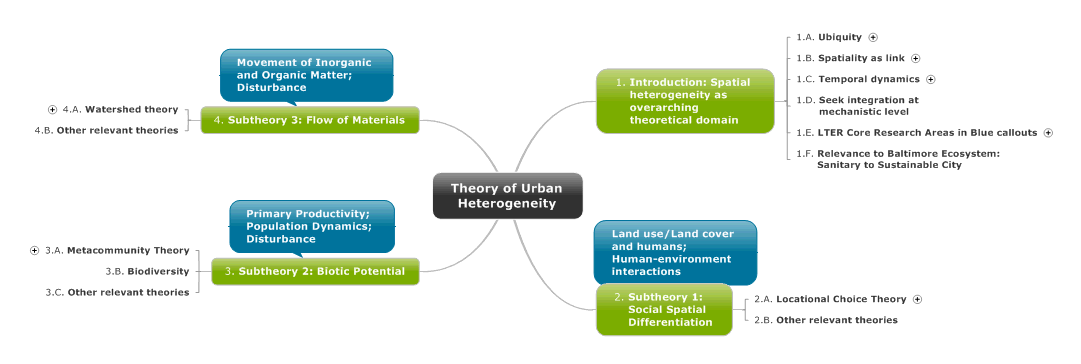Theory of Urban Heterogeneity
In order to plan for the next phase of BES, we are beginning to consider theoretical frameworks. Here is the current status of that search.
A Multitude of Urban Theories. There are many theories relevant to urban ecosystems. These theories differ in their focus on specific facets of urban structure, function, or dynamics, and in their focus on one or several scales. Broad urban theories address topics as diverse as the ancient development of cities, the scaling law of benefits and burdens of urban size, urban gradients in megaregional context, urban metabolism and footprint, urban biodiversity, species homogenization and adaptation, political ecology, industrial modernization, and many others. Urban theories have emerged from disciplines as diverse as sociology, architecture, urban planning, and economics. This document introduces a candidate theory for BES: a theory of urban heterogeneity.
Jobs of Theory. There are two main jobs for BES theory: 1) Motivating the hypotheses behind specific research projects within BES; and 2) Clearly linking the diverse specialized activities in BES to a multidisciplinary framework. In addition, our theory should help organize research and education in the context of Baltimore’s metropolitan shift from a sanitary to a sustainable city and help meet the challenges of climate change. What theory might the Baltimore Ecosystem Study use to move forward?
A Candidate Framework. BES has helped pioneer the social-ecological approach to metropolitan ecosystems and of urban regions consisting of cities, suburbs, exurbs, and rural lands. This approach recognizes spatial heterogeneity at various scales, ranging from individual parcels to the entire urban region. Although we have used this perspective, in the form of patch dynamics, from the beginning of BES, important improvements in the understanding of urban systems suggest that we should attempt to articulate a new, inclusive theory of urban spatial heterogeneity. Advances in understanding the spatial dimensions of biogeophysical and social sciences must be accommodated.
A newly articulated theory for BES could emerge from an overarching hypothesis: spatial heterogeneity at various scales, and reflecting the key structures and processes in the metropolis, drives social-ecological interactions and dynamics.
Nested within the overarching hypothesis would be specific subtheories or model domains that specify the different, key structures and processes we deem important in the Baltimore ecosystem. The choice of the subtheories should build on empirical experience in Baltimore as well as on the broader social and biogeophysical theories our team brings to the table.
The subtheories of urban heterogeneity match the fundamental structure of ecosystems. We focus on 1) the flux of materials across heterogeneous space, 2) the biotic potential of different patches, with its implications for nutrient retention and ecosystem production in the urban mosaic, and 3) the design and management decisions by human institutional. These three subtheories can help connect the overarching hypothesis to our specific long-term data, experiments, and syntheses.
The discussions at the steering committee meeting on September 21 should identify key model types, data streams, and the organizing hypotheses in each of these three major urban ecosystem realms.



